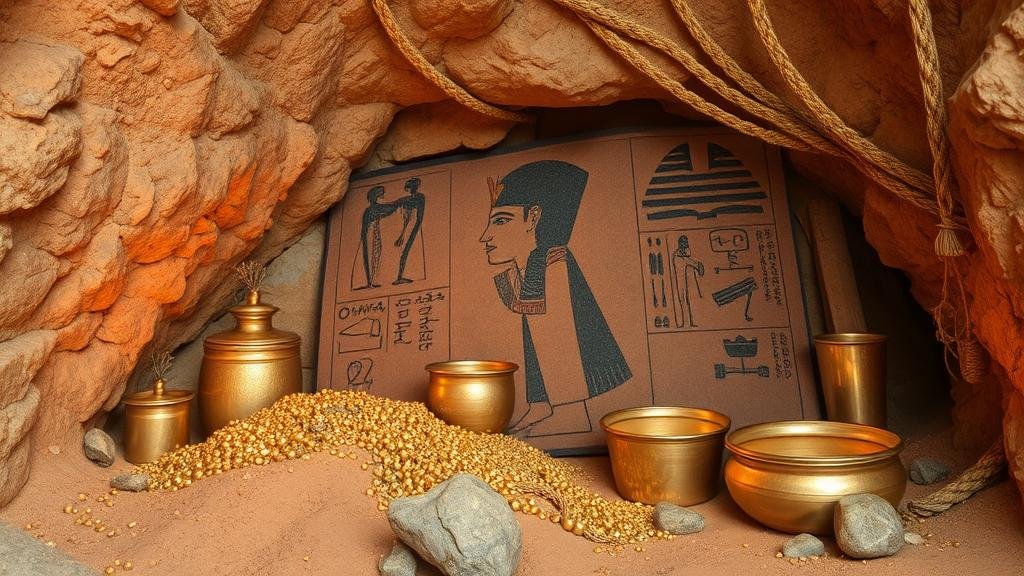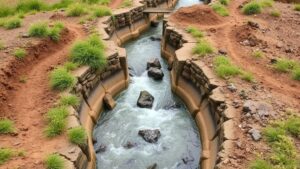Mining in Ancient Egypt: How Copper and Gold Were Extracted
Mining in Ancient Egypt: How Copper and Gold Were Extracted
Mining held a crucial role in the economic and cultural development of ancient Egypt, particularly with the extraction of two of its most valuable resources: copper and gold. The methods used by the ancient Egyptians not only reflect their ingenuity but also laid the groundwork for future mining practices.
The Importance of Copper and Gold
Copper and gold were more than mere commodities in ancient Egyptian society; they emblemized wealth, power, and divine favor. Copper was essential for tools and weapons, while gold was synonymous with eternity and the divine, often used in tombs and for ceremonial objects.
- Approximately 50,000 tons of copper were mined from Egypts various sites during the height of its production.
- Gold, often derived from the Nubian desert, contributed significantly to the wealth of the Pharaohs, with estimates suggesting over 2,000 pounds of gold were extracted annually at times.
Mining Techniques in Ancient Egypt
The mining techniques employed by the ancient Egyptians were innovative for their time. extraction of copper and gold occurred primarily in two regions: the Eastern Desert and Nubia.
Extraction Methods
To extract copper and gold, miners used a combination of manual labor and rudimentary tools:
- Instead of modern drills, miners utilized stone hammers and chisels to break the ore.
- Fire-setting was another technique: miners would heat rock using fire, causing it to crack and subsequently making it easier to extract the ore.
The process of extraction was labor-intensive, often involving the mobilization of hundreds of workers. These workers were typically recruited from local communities, and their labor was seasonally aligned with the agricultural calendar, which allowed for greater workforce availability during the Niles inundation period.
Transportation of Ore
Once extracted, copper and gold ores had to be transported to processing sites. This was achieved using:
- Donkeys and slaves to carry the ores over land, especially in rugged locations.
- Rafts along the Nile River, allowing easier movement of materials to central locations where they could be processed.
Processing of Copper and Gold
After extraction, the ores underwent a series of processing steps to yield pure metals.
Refining Techniques
The refining of copper involved smelting, where ores were heated in furnaces at temperatures reaching 1,200 degrees Celsius. This process removed impurities, producing usable copper for tool making.
Gold, due to its malleability and low reactivity, required less processing. The typical method was to crush the ore into smaller pieces and then wash it to separate the gold dust from the heavier sand and rocks. Goldsmiths would then heat and mold the metal into items for trade or burial.
Cultural and Economic Implications
The success of mining copper and gold greatly impacted ancient Egyptian culture. Gold, in particular, was intertwined with religious significance. For example, the burial of Pharaoh Tutankhamun included over 100 artifacts made of gold, emphasizing the metals connection to the afterlife.
- Trade routes established for copper and gold facilitated economic growth and connections with neighboring cultures.
- The wealth derived from these resources played a vital role in consolidating the power of pharaohs, enabling the construction of monumental architecture like the pyramids.
Conclusion
Mining in ancient Egypt, particularly for copper and gold, was a complex operation that combined labor, innovative techniques, and religious significance. The skills developed during this period informed future mining efforts and contributed to the geopolitical power of ancient Egypt. Leveraging knowledge from this time can illuminate modern practices in resource extraction, underlining the economic and cultural legacy that mining leaves behind.
Actionable Takeaways
For those interested in ancient engineering and mining practices, consider:
- Exploring archaeological sites in Egypt to gain insights into ancient mining techniques.
- Researching modern applications of ancient extraction methods, particularly in sustainable practices.



